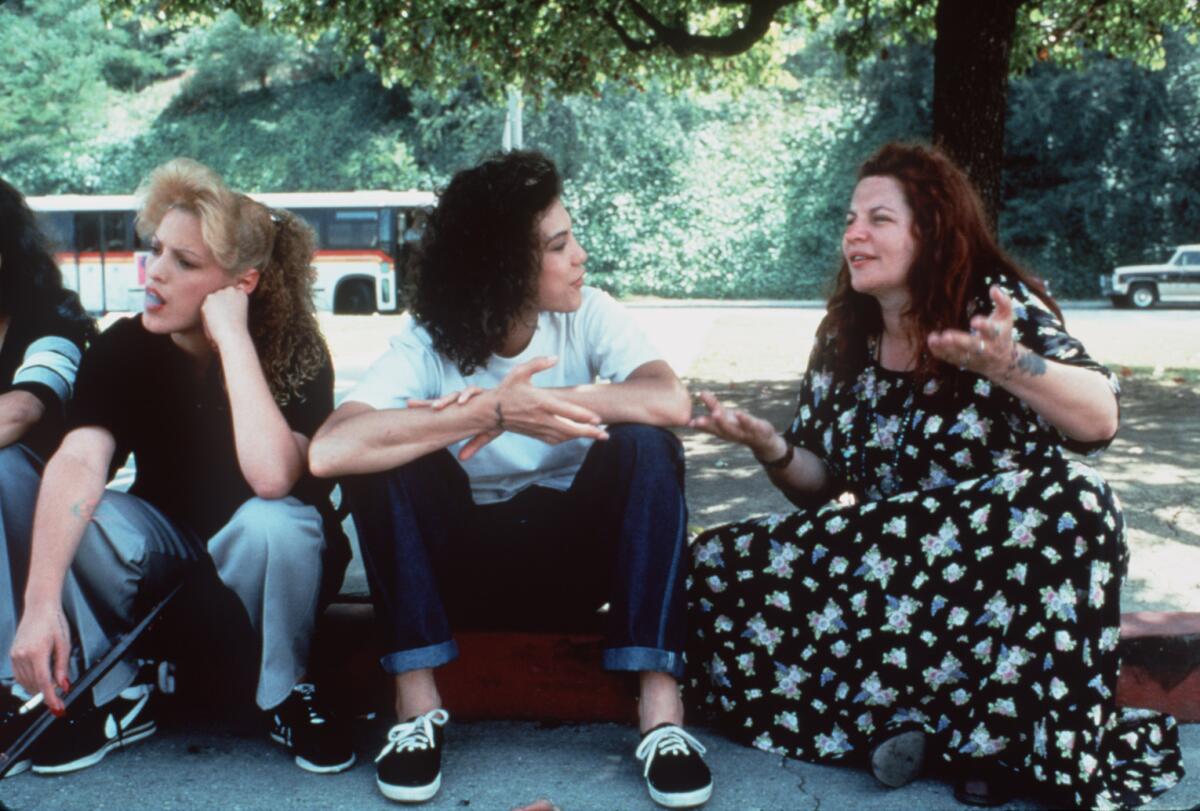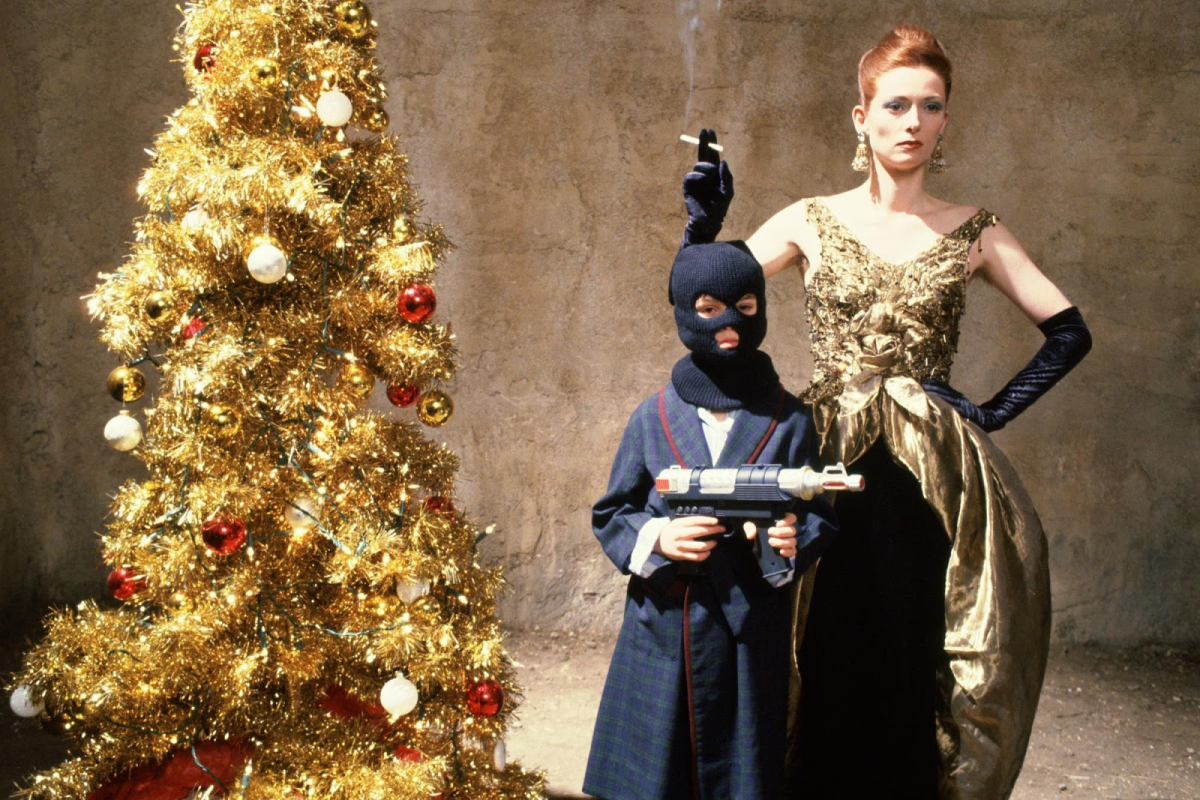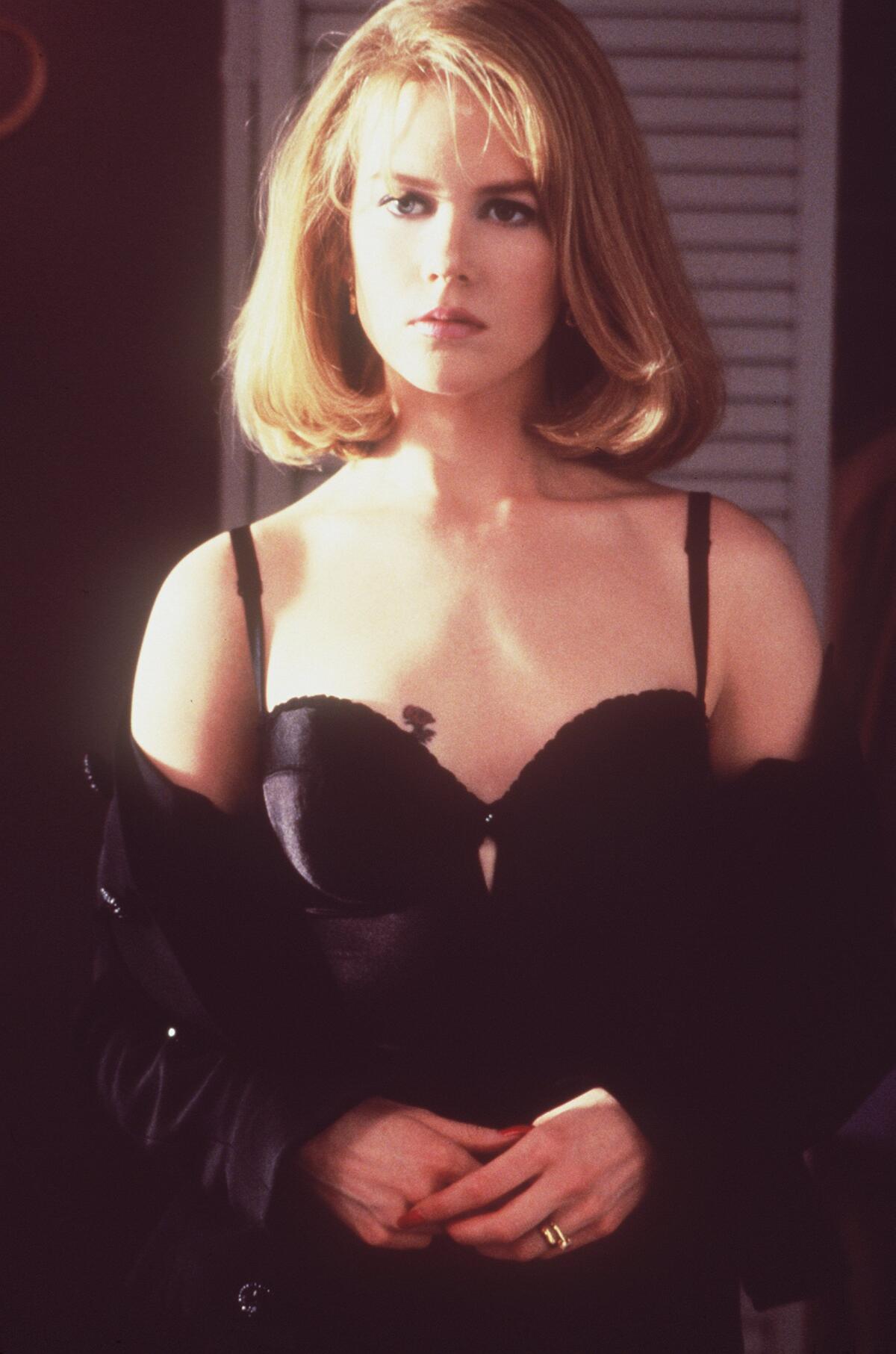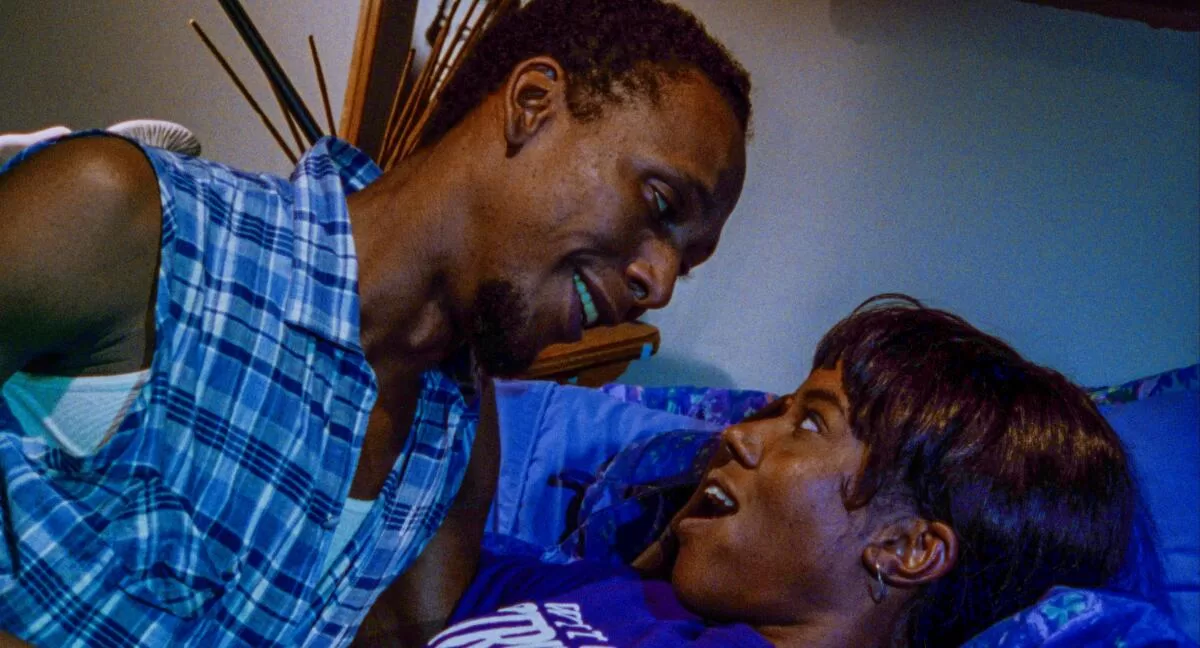In what could be a major sign of changes to come across the industry, this week Sony Pictures Entertainment bought the Alamo Drafthouse Cinema chain, known for its idiosyncratic programming and dine-in theater experience.
As reported by The Times’ Christi Carras and Ryan Faughnder, Sony did not disclose the price of the deal but promised to “preserve Alamo Drafthouse’s distinctive movie-dining experience.”
“Alamo Drafthouse’s differentiated movie-going experience, admired brand and devoted community fit well with this vision,” Ravi Ahuja, president and chief operating officer of Sony Pictures Entertainment, said in a statement. “We look forward to building upon the innovations that have made Alamo Drafthouse successful and will, of course, continue to welcome content from all studios and distributors.”
Long-standing restrictions on movie studios owning movie theaters have been eased in recent years, setting the stage for this sale.
As Shelleen Greene, professor of cinema and media studies at UCLA, told The Times, “This is another sign of acclimating to a shift in theater-going practice, in viewership, in the ongoing adjustment to streaming services.”
The vibrant return of ‘Naked Acts’

(Kino Lorber)
One of the true discoveries of this year has been the restoration and reissue of Bridgett M. Davis’ 1996 film, “Naked Acts.” At the time, Davis self-distributed the film and it reached only a limited audience. Recently, though, Maya Cade of the Black Film Archive came across the movie and worked with Milestone Films and Kino Lorber to champion its 4K restoration and theatrical release. Having played at the recent Los Angeles Festival of Movies, the film will have a limited run at the American Cinematheque beginning on Tuesday, June 18.
Set amid a vibrant world of video stores and artist-run cafes, the film follows Cece (Jake-ann Jones), a 20-something Black woman and aspiring actor in New York City grappling with long-standing body-image issues after having recently lost 57 pounds. Her mother was a famed blaxploitation star and her grandmother was a grand dame of the theater. When Cece gets cast in a low-budget independent film, she attempts to negotiate her way around a nude scene, surfacing long-repressed difficulties. The cast includes Ron Cephas Jones and Renee Cox.
Cade recalled via email why she decided to advocate for the film’s revival after she first saw it for herself.
“In my work, I’ve come across countless films that only have a life in the whispers of the audiences that have somehow seen them without proper distribution,” Cade said. “Why ‘Naked Acts’ now? The film, in theme and script, is timeless. I simply thought this film could no longer be a whisper. I couldn’t wait for someone else to believe in the film, I had to put my whole weight behind championing it. It remains one of the best and easiest things I’ve ever done.”
While Jones has had a long career as an author and teacher, “Naked Acts” remains her only feature credit. She recently got on a Zoom call from her home in New York City to talk about the film. Regarding the experience of having it find new, wider audiences at last, Jones said, “Someone said to me, ‘It feels like it’s a period film that you made today set in the ’90s,’ which was so funny to me, but so gratifying. That is just beyond what any filmmaker could imagine, that your work still stays relevant and resonant all these decades later. It’s been beautiful. Like if it had to happen that it didn’t get distribution until now, how gratifying that people are getting so much from it now.”
“Naked Acts” has a real ambivalence about movies. It’s unusual for a first film. Where did that come from?
It’s really rooted in my love of movies. But also I think when you love something, it can break your heart. And I did feel coming along over the years, particularly as a young woman, that I wasn’t really seeing portrayals of people who were like the people I knew, that happened to be Black folks. And that was disheartening. And even when there was a bit of a film movement and Spike Lee hit the scene and they talked about the Black film explosion in the ’90s — air quotes — it didn’t include women for the most part.
And so again, I didn’t see Black women like the ones I knew in my life portrayed in a way that felt true and honest. And it felt to me as though a way to explore that was to think about what must it mean or what must it feel like to be a Black actor, a Black actress, we used to say, who finds all that limitation out there when she’s simply trying to express her craft? That felt like a way to talk about my disappointment, my real respect for the craft and for film and for what it can do. And my hope that it could do more.
How did you come to distribute the film yourself?
Reluctantly. Each step of the process, I thought it would be more collaborative. I wanted a producer. Once I’d written the script and I wanted to direct it, I thought I’ll find the right producer. But it didn’t take long to realize that, given the content, given the sensitive nature of what I was trying to pull off, I really didn’t feel I could risk it. I had to step up and produce myself. I just did not have any meetings with any producers that gave me confidence. So now I’m directing, writing and producing my first film. So I thought, just do what you’ve seen other independent filmmakers do — get it in the can, get a rough cut, someone will step in and finish it and distribute it. That did not happen.
After it was turned down by Sundance, I managed to get it to premiere at the Boston International Women’s Festival, which I think is a small festival, but it turns out the Variety critic in Boston showed up. And I got this incredible Variety review. And I thought, all right, I’m going to get distribution. Well, I got a lot of meetings, but to a person, they all said the same thing to me: “We like it and it’s really interesting, but we don’t know who the audience is.” And I just couldn’t believe it. And that prompted me to say, “Well, looks like I have to take the distribution into my own hands and try to figure something out.” But that was not my initial goal at all.

Writer-director Bridgett M. Jones at New York’s Film Forum for a screening of her film “Naked Acts” in June.
(Tessa Dillman / Film Forum)
The movie deals with body issues and self-image but also ideas about nudity in movies and the production of sex scenes. It feels like a very contemporary conversation, given the recent rise of intimacy coordinators in film and TV. What inspired you to grapple with that in your film?
I’m going to be very honest with you. I think a lot of it was about what I hated, about films that would annoy me. And I thought, this is really exciting because now I have the means of production here, and I can comment on what I have always found problematic. And so sex scenes are often about women revealing their bodies. Even if it’s not meant to be gratuitous, it often is. Like, did she really need to have her whole top off while he shows nothing? What was the point there? And I just thought, it’s not that there’s a problem seeing two people make love on the screen. That’s not the issue. It’s about: What’s the intent of the filmmaker behind the camera? And I always felt like I could tell that it was a little voyeuristic. It wasn’t really about the affection between these two people. So a lot of what I was trying to do was just comment on things in a way that spoke to what I would prefer and just had never seen.
In one of the scenes when they’re shooting the film and Cece is arguing with the producer, she says, “Your method is not the only way.” That felt like a throughline for the entire movie, trying to find another way.
Exactly. I was like, all these Black male filmmakers, God bless them, but your way’s not the only way. I used to complain about the women characters in Spike Lee’s films. I loved his films, for the most part. “She’s Gotta Have It” really shifted the landscape for me and so many others. But I also found the women characters a little problematic. And I would complain about them at places like cocktail parties. And finally, someone literally said to me, “That’s his portrayal. If you don’t like how he portrays women, then make your own film.”
And I think it was an offhanded comment, but actually it stuck. And it was a good point. It was about showing your way. It’s not about telling someone they should do it differently. And that’s really, I think, the genesis of my feeling: I think I want to do this myself.
‘Mi Vida Loca’ in 35mm

On the set of “Mi Vida Loca,” director Allison Anders, right, with Marlo Marron, center, and Nelida Lopez.
(Sony Pictures Classics)
We spoke to Allison Anders a few weeks ago about the Don’t Knock the Rock festival she curates and produces with her daughter, Tiffany Anders. Now on Saturday, the L.A. Conservancy’s Last Remaining Seats series will screen Anders’ personal 35mm print of her 1993 film, “Mi Vida Loca,” at the Palace Theater in downtown Los Angeles. Lowriders and other classic cars will cruise Broadway before the movie. The event is already sold out.
Set in L.A.’s Echo Park neighborhood, where Anders had once lived, “Mi Vida Loca” follows four Latina teenagers as they navigate friendship, motherhood and the ever-present realities of gang life. In a key storyline, two friends, Sad Girl (Angel Aviles) and Mousie (Seidy Lopez), become pregnant by the same boy.
The film premiered at the Cannes Film Festival in 1993. When it received a commercial release in 1994, in his review for The Times, Kevin Thomas called the film “well-meaning but misguided,” adding, “You respect Anders’ impulse not to judge, but her context and characters are simply too shallow not to make most everyone seem foolish. … You sense that Anders wanted to make another film like [her debut] ‘Gas Food Lodging’ in praise of female solidarity in the face of male unreliability, but when the women are Latina gang girls, she trivializes them by avoiding all the questions their identity and situation inescapably raise.”
That review inspired Anders herself to write a rebuttal, noting, “I would normally never write a response to a review of my work as a writer-director of films, because I respect and admire good, fair film criticism and, being a humanist, I realize film criticism is an opinion, and everyone is entitled to their own. Kevin Thomas’ review of my new film, ‘Mi Vida Loca’ (‘The Road to ‘Mi Vida Loca’ Paved With Good Intentions,’ Calendar, July 22), was by no means the most vicious I’ve ever received as a director, but it is the one that has disturbed me the most deeply.”
Anders added, “My job as a filmmaker is to present what I know and observe, imagine and intuit, not to moralize, judge or offer solutions. However, as a citizen and member of the community I can do my part to help encourage options. … Thomas is wrong when he says I am a woman of good intentions. I am a woman of action.”
In 1992, nearly a year before the film’s Cannes premiere, Jan Breslauer wrote about the film’s production on location in Echo Park.
New Queer Cinema at the Academy Museum

Jody Graber and Tilda Swinton in Derek Jarman’s 1991 movie “Edward II,” playing as a part of the series “Full of Pleasure: The Beginnings of New Queer Cinema.”
(Academy Museum)
The Academy Museum is launching a series, “Full of Pleasure: The Beginnings of New Queer Cinema,” celebrating the emerging movement of queer filmmakers of the 1990s. Running through July 11, the series begins with the West Coast premiere of a 4K restoration of 1994’s landmark lesbian indie “Go Fish,” followed by a conversation with director Rose Troche.
Other highlights of the program include 35mm screenings of Tom Kalin’s 1992 “Swoon” and Gus Van Sant’s 1991 “My Own Private Idaho” plus Isaac Julien’s 1991 “Young Soul Rebels” in 4K. Gregg Araki will be present for a conversation following a screening of his 1992 “The Living End.”
Also screening will be Derek Jarman’s 1991 “Edward II,” Jennie Livingston’s 1990 “Paris Is Burning,” Cheryl Dunye’s 1996 “The Watermelon Woman,” Christopher Münch’s 1991 “The Hours and Times” and Todd Haynes’ 1991 “Poison.”
Manuel Betancourt spoke to film critic and scholar B. Ruby Rich, who coined the term “New Queer Cinema” in the pages of the Village Voice.
“These films were a rallying cry,” Rich said. “You felt the joyousness of their arrival in the world. They cleared this space for themselves. They kind of put up their own Klieg lights. It wasn’t pleasure without pain. I think that tricky balance was always there.”
Other points of interest
UCLA’s Celebration of Iranian Cinema

An image from Marva Nabil’s 1977 film “The Sealed Soil.”
(UCLA Film & Television Archive)
This year’s edition of the UCLA Film & Television Archive’s long-running Celebration of Iranian Cinema launches this weekend, running through June 30. Sierra Urich’s “Joonam,” a portrait of three generations of Iranian women throughout the diaspora, will get things started with the filmmaker in attendance.
On Saturday there will be the world premiere of the Archive’s restoration of Marva Nabil’s 1977 film “The Sealed Soil,” the earliest complete surviving feature film directed by an Iranian woman. Nabil is scheduled to be there in person.
Gus Van Sant’s ‘To Die For’

Nicole Kidman in Gus Van Sant’s movie “To Die For.”
(Columbia / TriStar)
Also on Saturday, Now Instant Image Hall will screen a recent restoration of Gus Van Sant’s 1995 “To Die For,” with Van Sant and cinematographer Eric Alan Edwards present for a conversation afterward with photographer Johnny Le. The film, with a screenplay by Buck Henry, is a biting satire of the American tabloid mentality and in some ways prefigures the contemporary reality-show mind-set of fame at whatever cost. In the movie, Nicole Kidman plays a small-town TV weather reporter who ensnares some local teenagers to kill her husband, feeling that he does not support her ambitions. The supporting cast includes Matt Dillon, Joaquin Phoenix, Casey Affleck, Alison Folland, Illeana Douglas and, in a small but crucial role, David Cronenberg.
In his original review, Kenneth Turan called the film “the most accurate assault against the media age since ‘Network.’” His review also noted, “‘To Die For’ isn’t afraid of the dark. A smart black comedy that skewers America’s fatal fascination with television and celebrity, it employs an unerring nasty touch to parody our omnipresent culture of fame. And it uses a rather unlikely combination of talents to do the job. Star Nicole Kidman, director Gus Van Sant and screenwriter Buck Henry have difficulty fitting into the same sentence, let alone the same film about a creature of the media whose mad passion for the limelight is as addictive as a drug.”
In Laurie Werner’s fantastic profile of a then-28-year-old Kidman, Van Sant recalled how he cast her without a screen test after she got his phone number and called him at home.
“She said she felt destined to play this part,” Van Sant said. “And that kind of set me aback. But I felt that if she felt destined to play it, she would work harder than you normally would. She was so convinced that she would be the best choice that that was enough. I figured we could work it out.”
The film was recently released in a sparkling 4K UHD set by the Criterion Collection.
Rachel Sennott in ‘I Used to Be Funny’

Rachel Sennott in the movie “I Used to Be Funny.”
(Janick Laurent / Utopia)
Among last week’s new releases is writer-director Ally Pankiw’s debut feature, “I Used to Be Funny,” starring Rachel Sennott. The story follows aspiring comedian Sam (Sennott) as she struggles to move forward from PTSD. Though still quite funny, the role marks a turn into dramatic work for Sennott, one of the freshest onscreen presences in recent years in movies like “Shiva Baby,” “Bodies Bodies Bodies” and “Bottoms.”
In a review for The Times, Katie Walsh wrote, “In her film debut, [Pankiw] delivers a full and fulfilling narrative arc that is anchored by a surprisingly complex performance from Sennott. Rooted in a specific sense of place, character and emotional truth, the movie is a rare indie gem worth discovering.”
Back when the film premiered at SXSW in 2023, I spoke to both Sennott and Pankiw about the project. As Pankiw said of Sennott’s dramatic work in the film, “What she’s doing is she’s tricking people into thinking that what she does is effortless, but she is an incredibly gifted technician as an actress. And I think because people have seen her mainly in comedic roles, unfortunately, sometimes the misconception is that’s very easy if someone is like their character. But I think she’s more of a chameleon than people know.”
The ‘Ocean’s’ trilogy in 35mm

George Clooney, center, as Danny Ocean in the movie “Ocean’s Thirteen.”
(Warner Bros.)
On Saturday, the American Cinematheque will play a triple feature at the Aero of Steven Soderbergh’s “Ocean’s Eleven” (2001), “Ocean’s Twelve” (2004) and “Ocean’s Thirteen” (2007), all on 35mm. Starring George Clooney and Brad Pitt alongside an evolving supporting cast that includes the likes of Matt Damon, Don Cheadle, Carl Reiner, Elliott Gould, Al Pacino, Catherine Zeta-Jones, Andy Garcia, Bernie Mac, Ellen Barkin, Vincent Cassel and Julia Roberts, the films are a series of freewheeling crime capers in Las Vegas and points elsewhere.
In his review of “Ocean’s Eleven,” Kenneth Turan called the remake “a champagne bubble of a movie, lively, effervescent and diverting. If it bursts earlier than we’d like — and it does — that takes nothing away from the considerable pleasure it provides along the way. … Working with a well-chosen cast, [Soderbergh] shows an instinct for knowing his actors’ strengths and how to bring them out. He’s constructed an elaborate edifice designed strictly for pleasure. Just like Las Vegas itself.”
In other news
Controversy with Academy Museum’s ‘Hollywoodland’ exhibit
Josh Rottenberg and Stacy Perman reported on the controversy around the Academy Museum’s new exhibit, “Hollywoodland: Jewish Founders and the Making of a Movie Capital,” which spotlights the key contributions of Jewish immigrants such as Harry Cohn, Louis B. Mayer and Samuel Goldwyn to the early film industry.
Soon after the exhibit opened, some from the industry’s Jewish community criticized its portrayals of Hollywood’s Jewish moguls as perpetuating antisemitic stereotypes.
The Academy Museum is taking steps to address the concerns.
Producer Lawrence Bender said in an interview with The Times, “These guys were the creators of our industry, these are incredible movies made over the years, but there is no love or joy in filmmaking, nothing about the fact these guys built this incredible world.”
Most-watched films on Kanopy in L.A.
The streaming service Kanopy is free to users with a library card from participating institutions. This includes the Los Angeles Public Library, which has seen signups for the service increase 23% from last year.
In an exclusive list given to The Times of the top 10 most watched movies and TV shows of 2024 so far, all of the feature films were released by arthouse distributor A24, with Celine Song’s “Past Lives” topping the list.
